Fast cars and brilliant beef: how Goodwood became a destination for food lovers
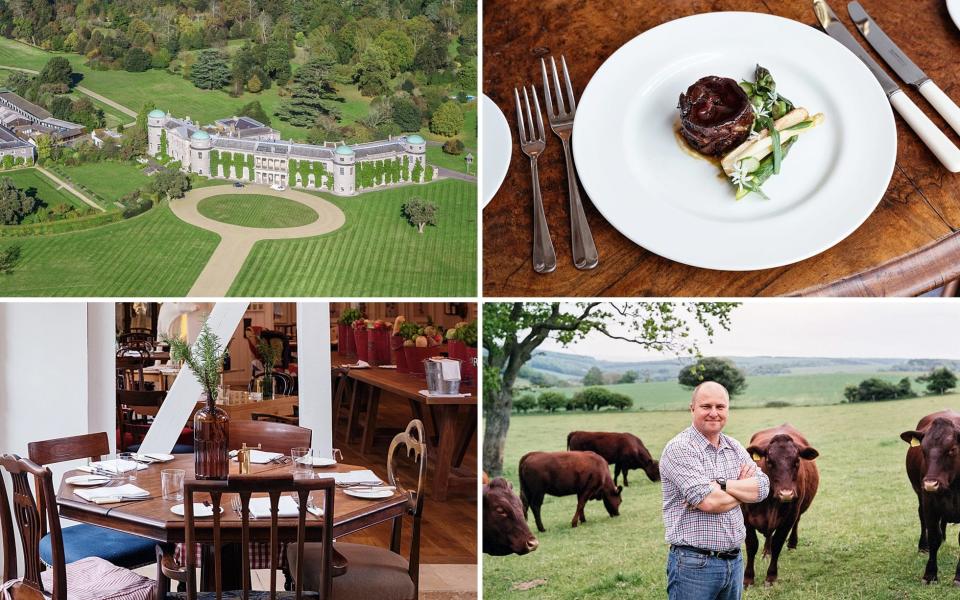
In five days’ time the first of 200,000 visitors will descend on Lord March’s 11,500-acre estate in West Sussex for the Goodwood Festival of Speed. Over the weekend they’ll watch heritage motor vehicles and pioneering supercars storm up the iconic 1.16 mile Hillclimb. But when I visit on a soggy day in May, the task is less a test of speed and more one of orienteering as we try to track down Tim Hassell’s Sussex cattle.
'There should be some in there,’ he says, bringing his Land Rover Discovery to a halt at the top of a steep field. Hassell is the general manager of Home Farm, the Goodwood Estate’s lowland organic farm, and at 3,800 acres one of the UK’s largest. It’s no surprise that his herds are hard to find.
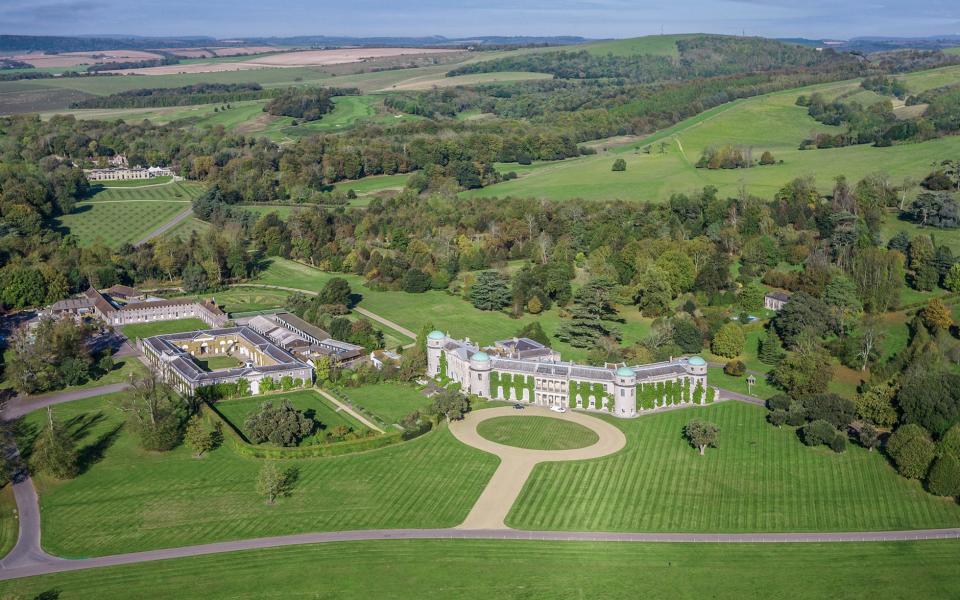
Hassell joined Goodwood eight years ago, having previously farmed in Northumberland ('it’s easier down here, warmer!’) and under his direction Home Farm has grown its livestock numbers as well as diversifying its traditional meat and milk production with ranges of cheese and beer.
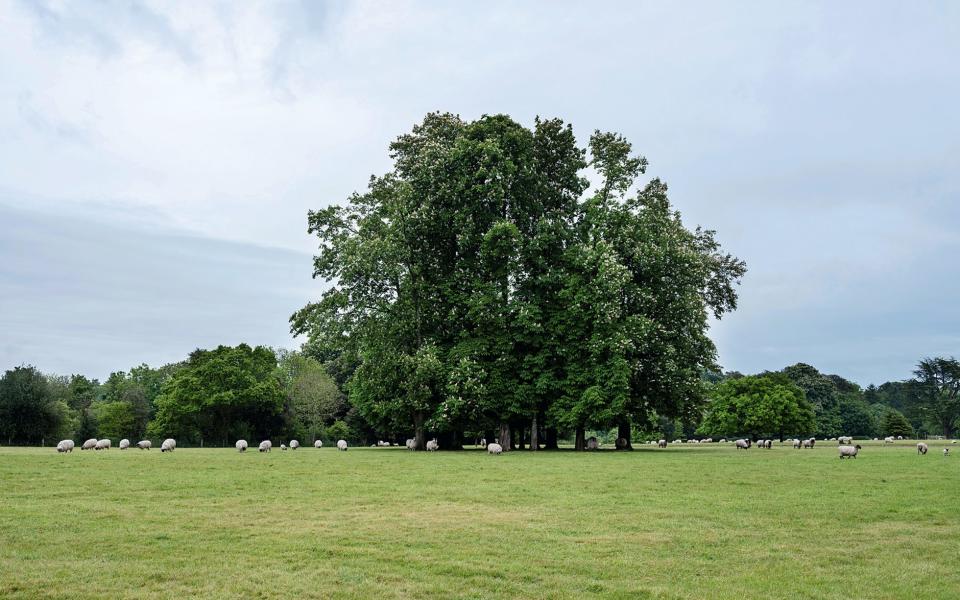
Over 200 dairy cows and their young, 500 pigs, 3,000-odd sheep and lambs, and 'getting on for 500 beef animals’ roam the farm. There are sheep, nonplussed in the driving rain, grazing outside Goodwood House on land that will soon be cornered by Ford Mustangs and Dodge Vipers as they compete in the festival’s first ever drift competition.
Hassell is well used to relinquishing his fields for the events, but the vast acreage allows him to rehome animals with ease, and to grow barley and oats for their feed.

We spy a group of two-year-old Sussex cows down the hill, their coats a deep rust-red with a gloss befitting a just-polished Austin. They swarm to greet Hassell, nuzzling for attention. 'Only two or three people handle them,’ he says, explaining their tameness. 'They graze all over the chalky downland where we have clovers and vetches, which are high in protein.’
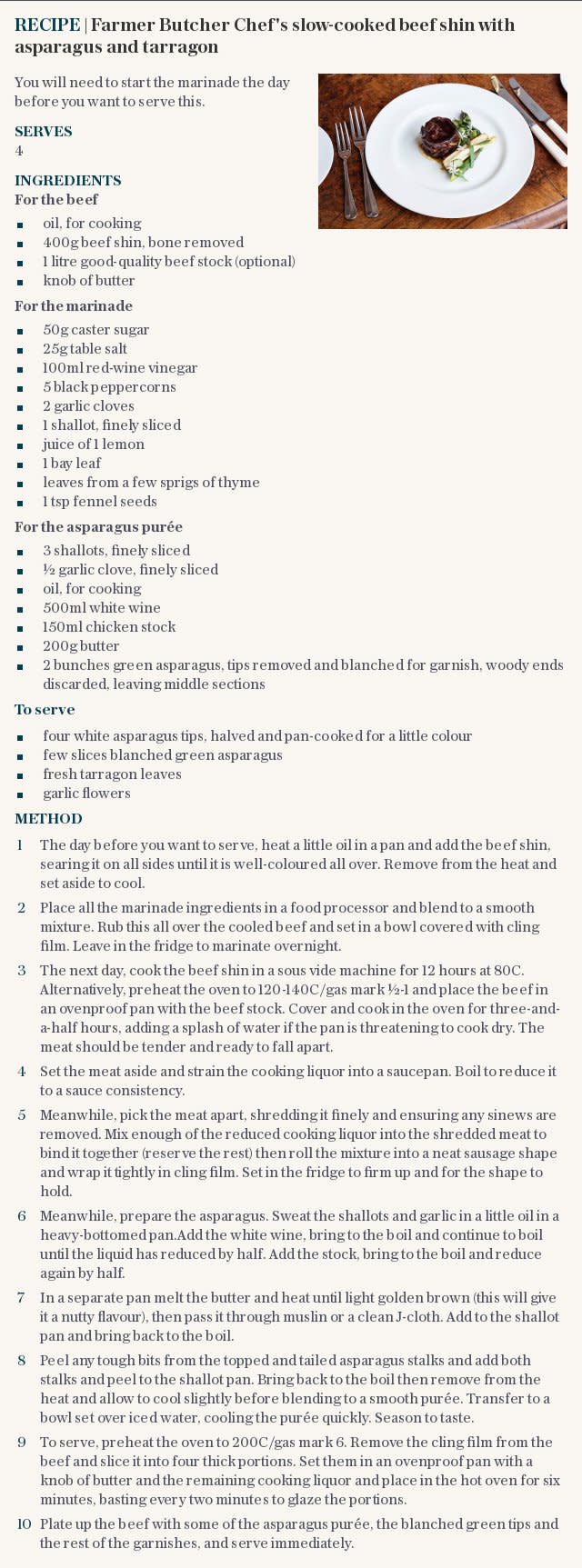
The calves stay with their mothers for three-and-a-half years before being taken for slaughter – a rearing practice that attracted butcher John Hearn to join the estate three years ago. 'The sheep and pigs are the same,’ he explains. 'They get at least twice the amount of life as many mass-produced animals.’

Hearn sends three cows a week to slaughter, and sells a small quota of meat to London restaurants, including The Ritz. The rest is used across the estate’s four restaurants, particularly the newest addition, Farmer Butcher Chef, which celebrates the successful collaboration of Goodwood’s experts on the land and in the kitchen.

Completing the trio is Goodwood’s executive chef, Darron Bunn, who during his 21 months in the role has worked hard to re-educate his cooks and their approach to menu planning. 'We needed to understand what produce was available from the farm. And with meat like this, why weren’t we enthusing about it more?’
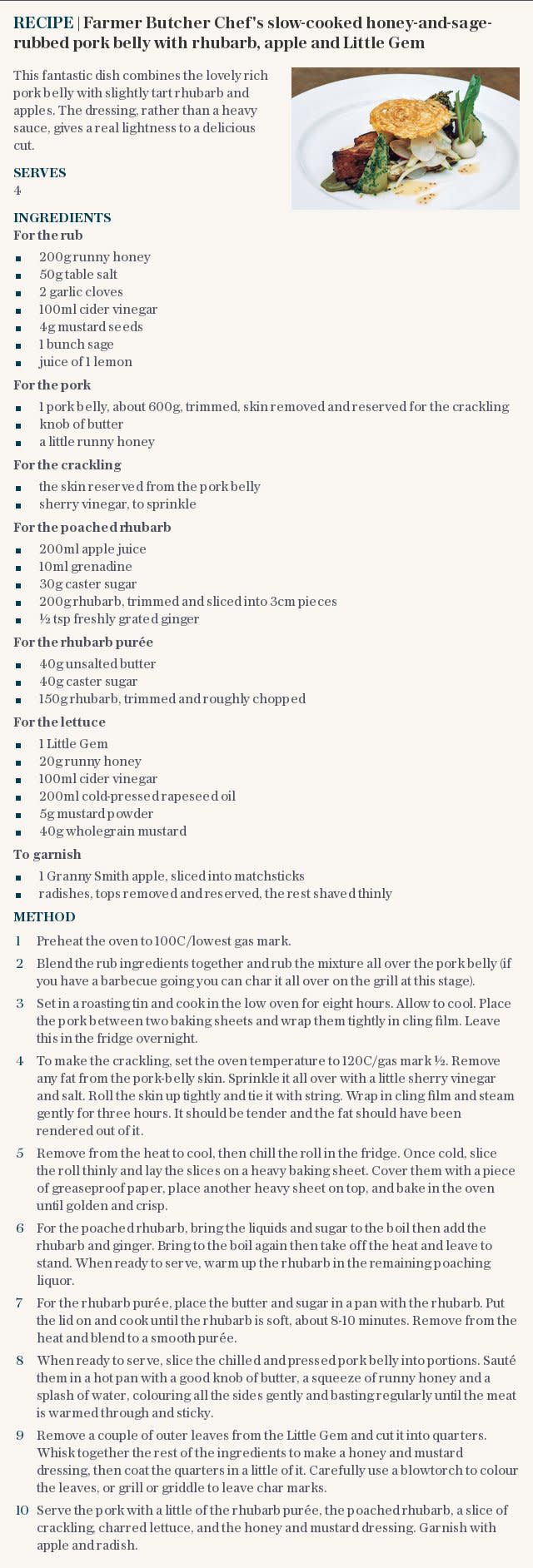
Bunn, Hearn and Hassell now meet every Friday, with butcher suggesting to chef the range of cuts he can provide. 'Ox cheek could swap in for shin, and we now use lamb belly, pork jowl and collar. It’s not all tails and tongues, but it doesn’t always have to be prime cuts either,’ says Bunn.
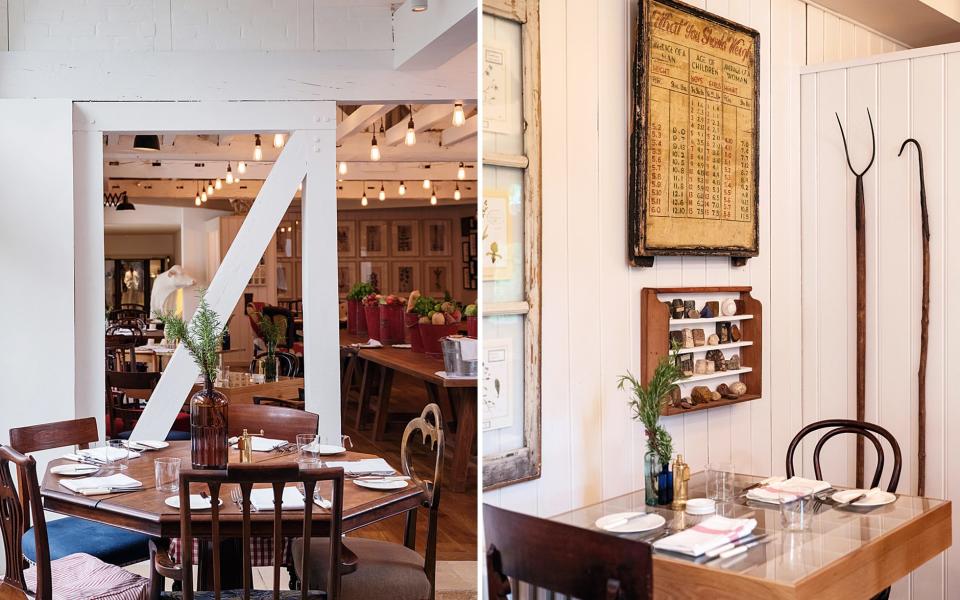
At Farmer Butcher Chef, where a late-18th-century coaching inn has been transformed by interior designer Cindy Leveson into a bright dining room decorated with horseshoes and heraldic banners, those meats are often slow-cooked (beef shin with perky asparagus; pork teamed with rhubarb and apple), or presented on a 'butcher’s board’. 'The thing I am proud of is that Farmer Butcher Chef has worked and I haven’t had to kill more animals to supply it,’ says Hearn.
Back at the restaurant, Bunn prepares for customers who are more likely to be locals than staying guests. 'Previously, the reason for eating here was because you were golfing, shooting or motoring. Food wasn’t the reason to come to Goodwood.’
With farmer, butcher and chef now working as one, that’s surely set to change.

 Yahoo News
Yahoo News 